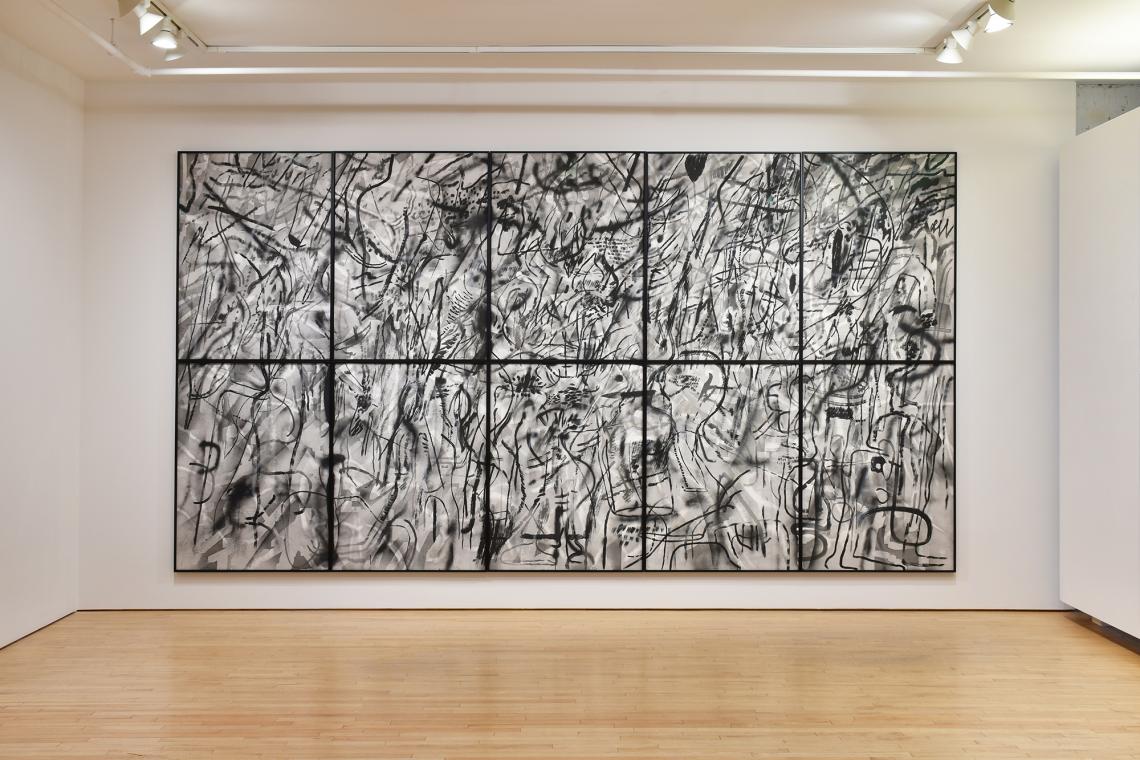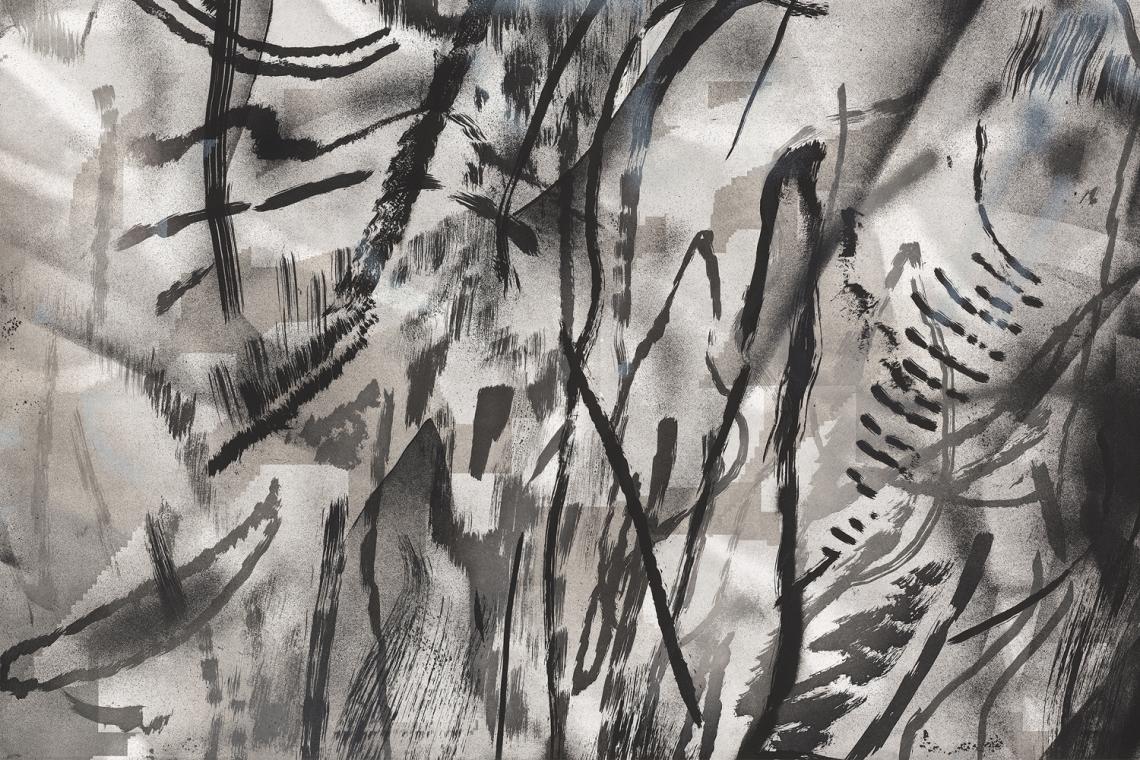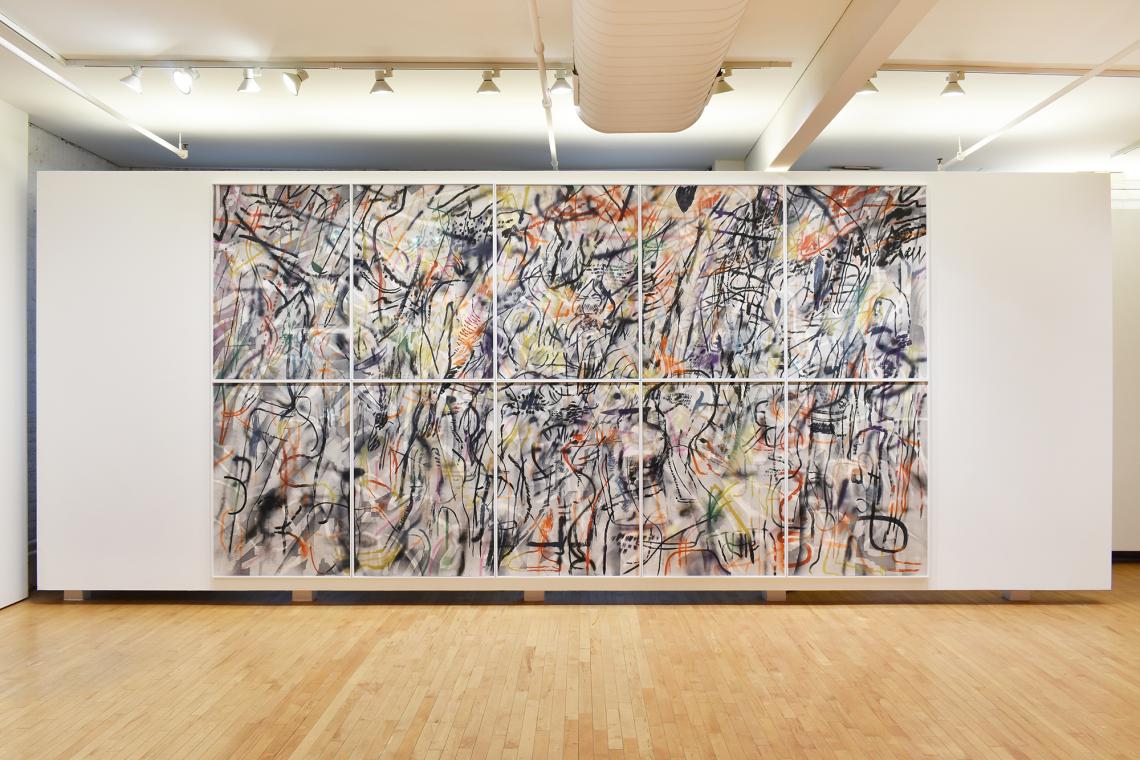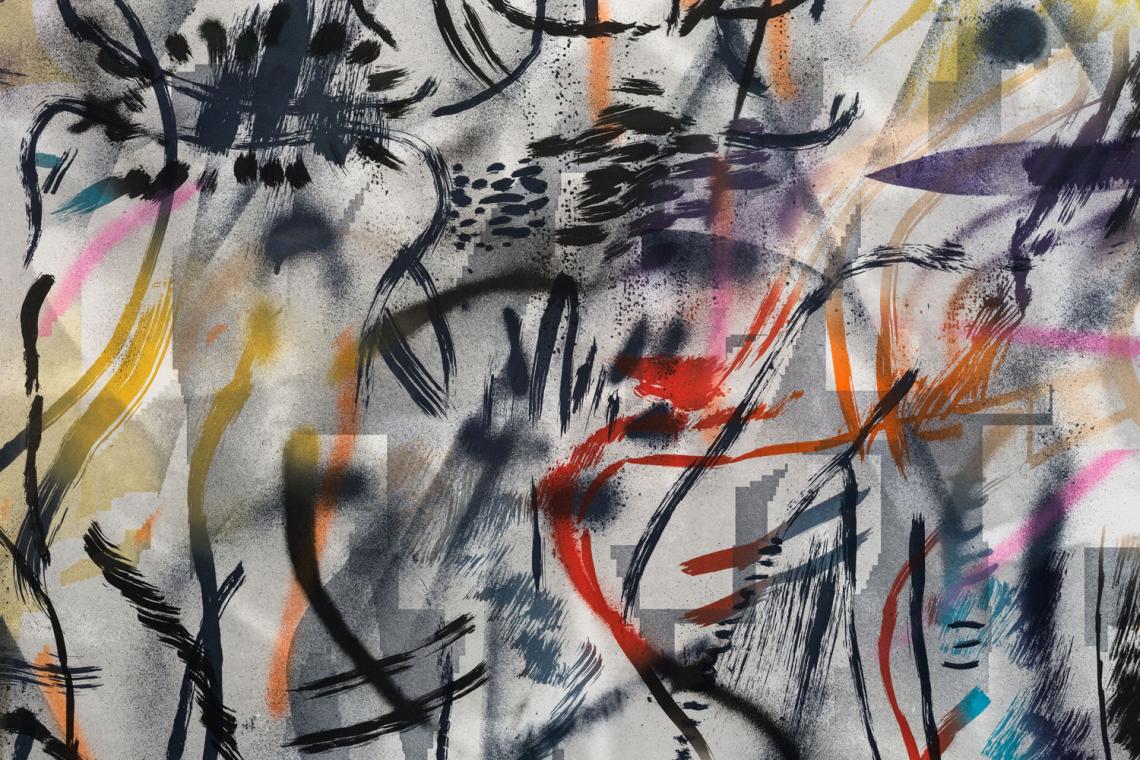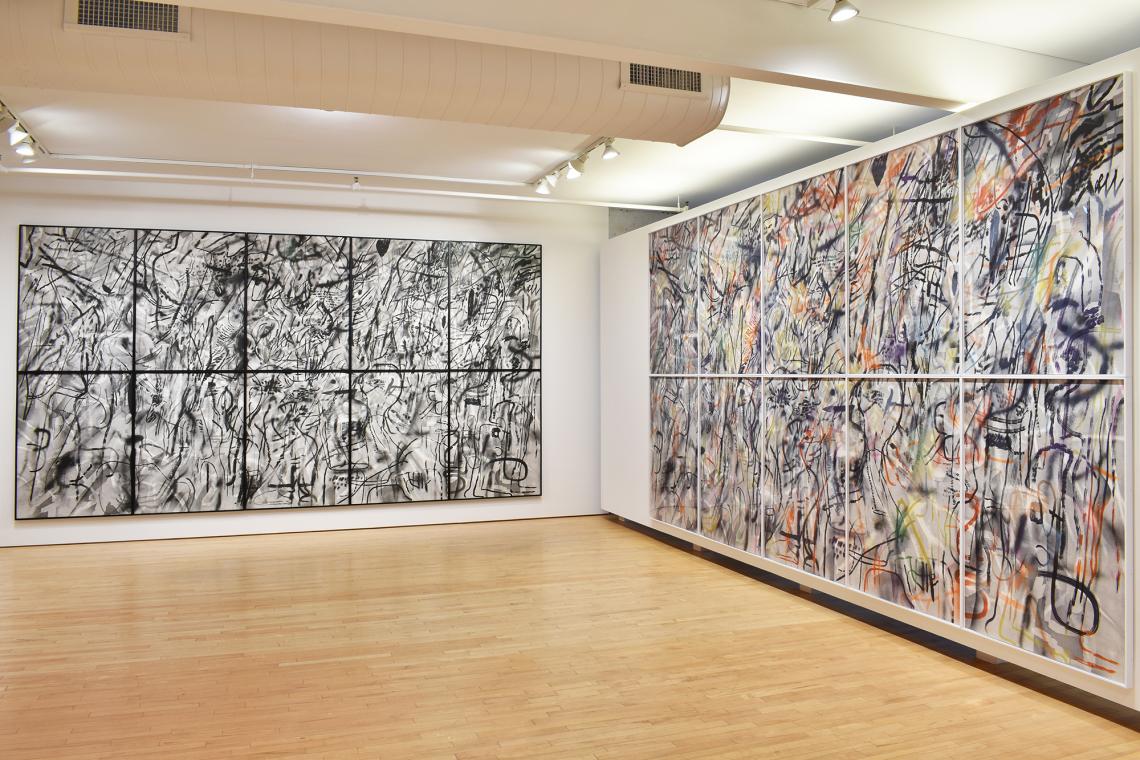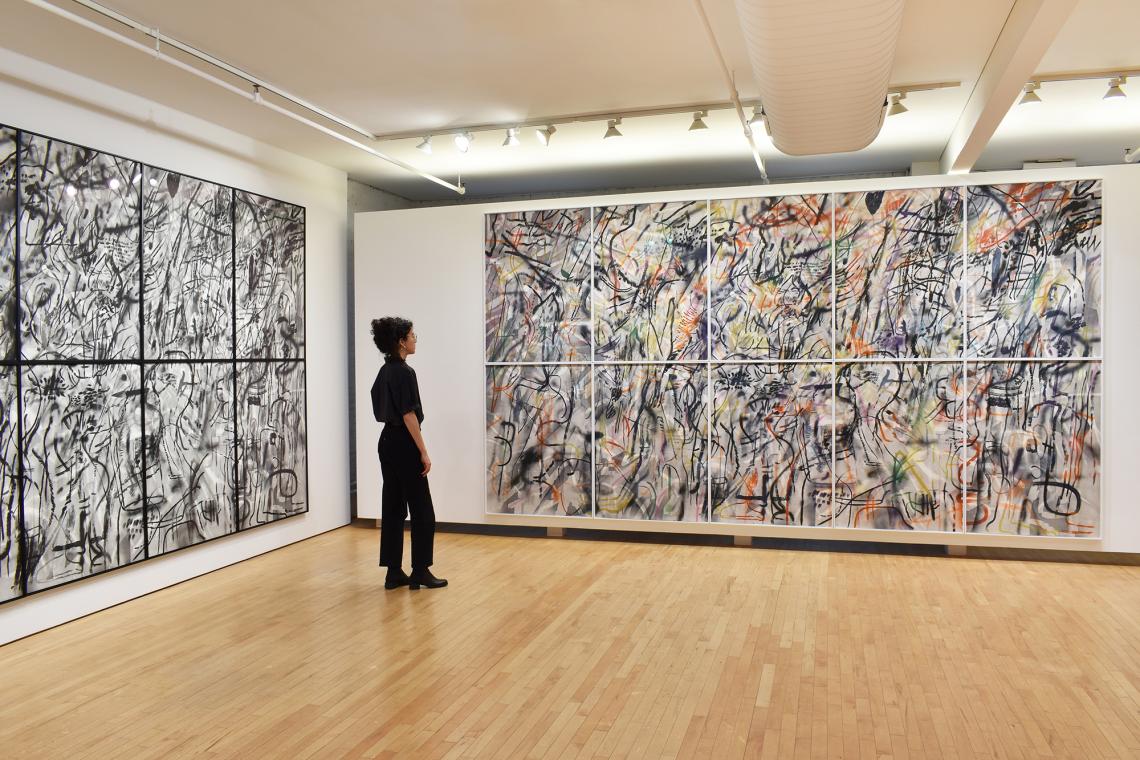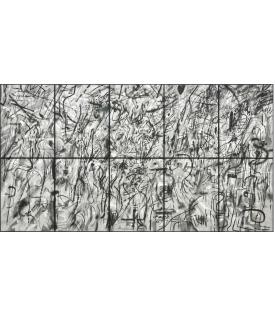This Manifestation of Historical Restlessness, (from Robin’s Intimacy)
10-panel etching/aquatint from 50 plates
Treatises on the Executed, (from Robin’s Intimacy)
10-panel etching/aquatint from 50 plates
The exhibition features two 10-panel aquatint etchings titled This Manifestation of Historical Recklessness (from Robin’s Intimacy) and Treatises on the Executed (from Robin’s Intimacy). The prints are titled after poet Robin Coste Lewis’s original poem and installation, Intimacy, 2022, commissioned by Mehretu and presented in a collaborative exhibition between the two at Marian Goodman Gallery Paris in 2022.
In their large scale, in the arrangement of imagery, and in the printmaking techniques used, these etchings are extraordinarily complex. Mehretu initially applied spray paint directly to aquatinted copper plates to create the bold white strokes that underly the imagery. Continuing on by using both Mylars and the plates, she developed the final imagery digitally, in part by working on her computer and determining her desired placement of colors. Hudson and his team located the marks to be printed in each color and, through much experimentation and multiple proofings, mapped out the colors for inking each aquatinted copper plate.
The number of colors on each plate ranges 1 to 12, with an ultimate total of 22 different colors, and there are five layers or sequences of plates for each of the ten panels. Requiring a remarkable amount of respect and collaboration between Mehretu and the printers to achieve the editions, ink was applied to the etching plates “a la poupée,” a technique that requires the hand-application of different ink colors to a single copper plate using a tarlatan pad. In all instances, instead of printing multiple colors — or, in the case of Treatises on the Executed, nuanced greys and blacks — via individual copper plates, the delicate application of multiple ink colors onto a single plate results in a gradient of hues that transition as Mehretu’s marks progress through the imagery.

